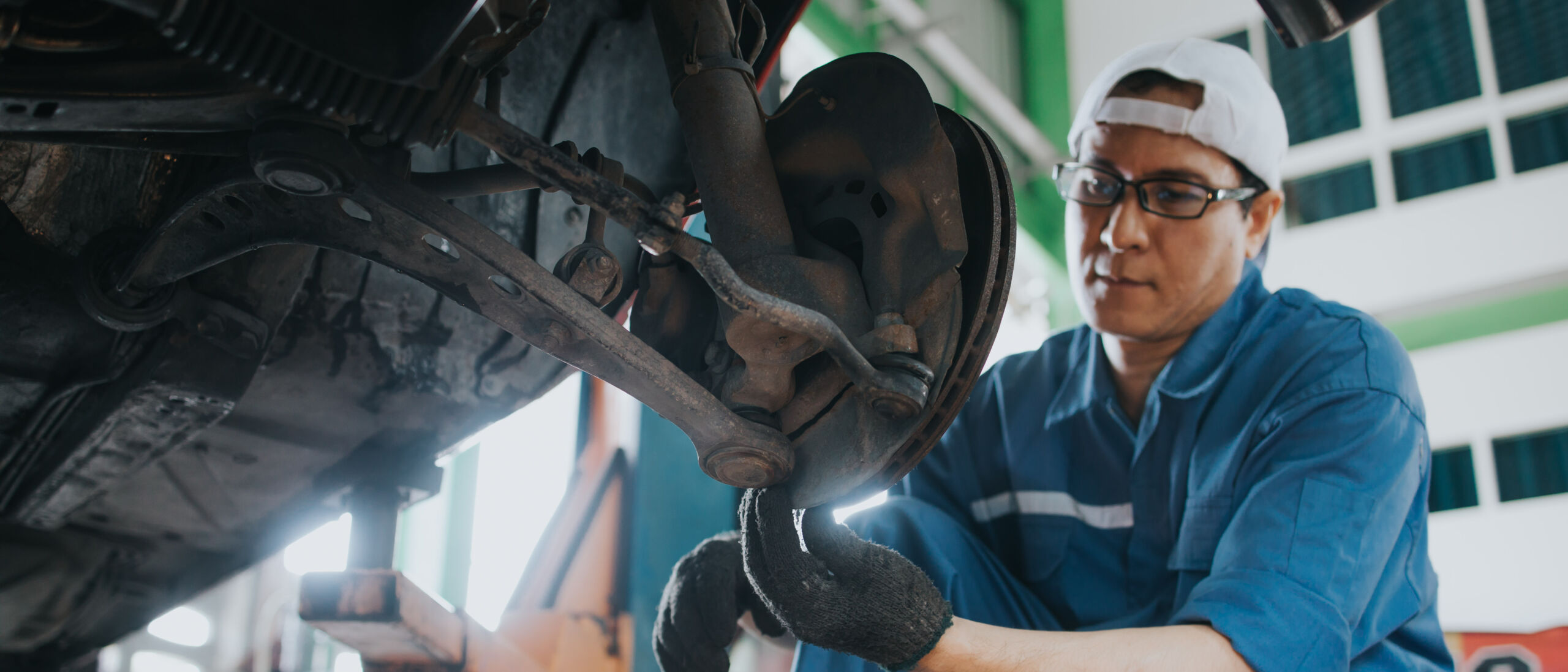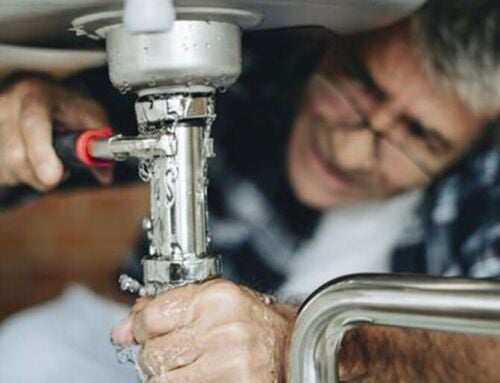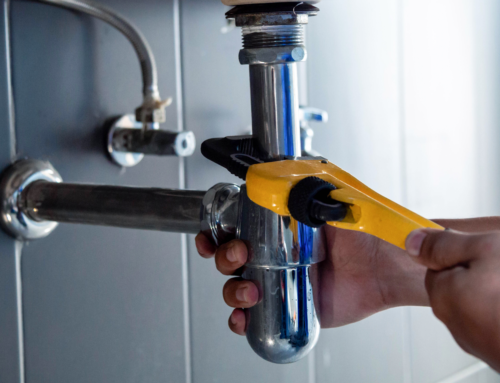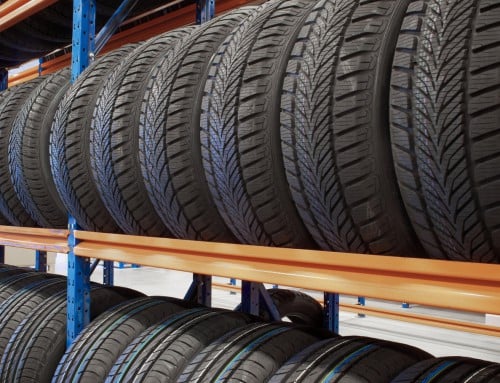Workers in the auto repair and body shop industry are exposed to a number of hazards that can cause bodily harm and property damage. The risks can range from burns to chemical exposure to mechanical injuries. That’s why it’s vital to find ways to mitigate these risks to help avoid or minimize incidents, and keep business running.
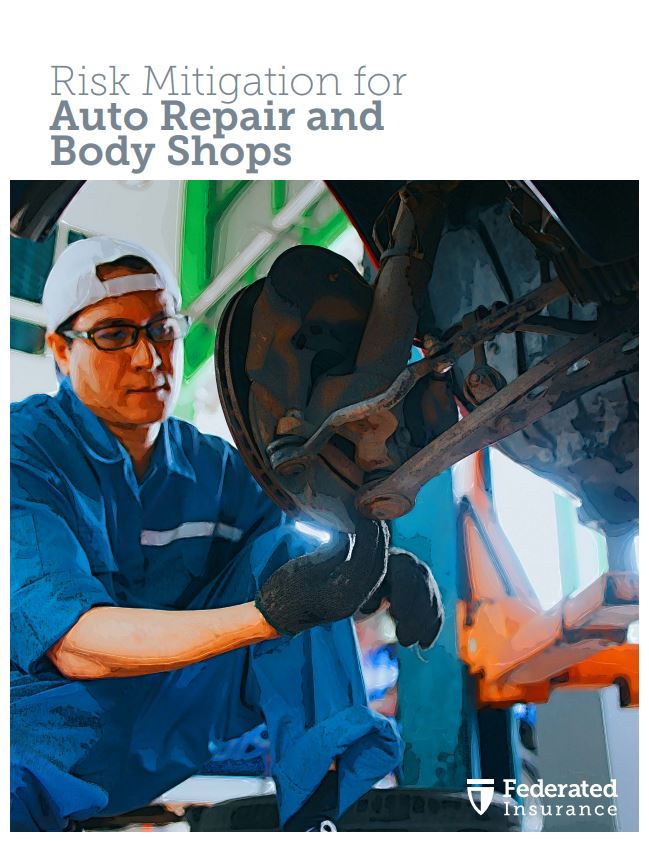 Download our whitepaper on risk mitigation for auto repair and body shops.
Download our whitepaper on risk mitigation for auto repair and body shops.
Types of risks auto repair and body shops face and tips on how to mitigate them
Fire hazards
The most common hazard for auto repair and body shops is fire, which is often related to the use of flammable liquids.
Spray paint booths
The National Fire Protection Association (NFPA) Standard 33 outlines all requirements for a properly installed spray paint booth, including the following guidelines:
All spray paint booths should be equipped with an approved fire suppression system (either a sprinkler system or dry chemical system). All components should be made of non-combustible material and the interior surface should be smooth to help prevent buildup of paint residue and help ensure proper ventilation and cleanup. All parts—including filters—should be removable to ensure that proper cleaning can take place.
Ducts and fasteners should be constructed of steel and properly supported, with 0.45 metres of clearance between ducts and unprotected combustible material, according to the NFPA Standard 91. The ducts should be exhausted directly to the outside, with the discharge point of the exhaust ducts at least 1.8 metres from an exterior wall or roof.
The primary objective of a properly designed spray paint booth is to help prevent fire and explosion by containing flammable vapours, removing them effectively, and controlling ignition sources.
However, fires in spray paint operation areas can develop very quickly, have high heat release rates, and produce large volumes of toxic smoke. Proper cleaning should be scheduled on a regular basis to ensure that buildup of overspray residue doesn’t occur.
Gasoline transferring
Transferring and handling gasoline in an auto repair shop is very dangerous, due to its flashpoint—the lowest temperature at which flammable vapours are produced in ignitable concentrations by a liquid. For gasoline, the flashpoint is -40°C. An open pail of gasoline at room temperature releases flammable vapours into the atmosphere, filling the area above and around the pail with invisible, explosive vapours. A spark, static electricity, or lighting up a cigarette can easily ignite the vapours.
If the process of transferring gasoline isn’t completed properly, it could result in a serious fire, as well as burn injuries and property destruction. Vapour containment is key: If there are no flammable vapours in the atmosphere, a fire cannot occur.
To transfer gasoline safely, use a gas caddy—a large container with added features to safely siphon or dispense gasoline. Safety features include a two-way hand pump, flame arrestors, and a bonding cable to eliminate static electricity. Any shop involved in gasoline fuel system service work, including replacing fuel pumps or changing gasoline tanks, must have a gas caddy or enclosed pumping equipment, according to Section 4.1.8.4 “Fuel Tanks of Vehicles” of the National Fire Code of Canada.
Battery safety
While batteries are commonly found in auto repair or body shops, they can also cause a fire, explosion, or bodily injury. The use of Personal Protective Equipment (PPE) is mandatory when working with batteries, as a component of your health and safety program. Employees should also be trained on standard operating procedures, including battery installation, removal, charging, maintenance, storage, handling, and transporting.
Portable fire extinguishers
Having portable fire extinguishers on hand is essential for any auto repair or body shop. After all, a fire can burn out of control in just 30 seconds, so choosing the right classification, size, and location is critical.
A qualified fire extinguisher service contractor should be consulted regarding selection, placement, and servicing of your fire extinguishers. Documented monthly visual inspections should be conducted by employees to ensure that each extinguisher is in its designated place and that there’s no obvious physical damage or condition to prevent its operation.
It’s also important to take the following things into consideration to help prevent a fire from breaking out:
- The safe handling of rags and wiping cloths
- Proper storage of flammable compressed gas cylinders
Flooding
If your business is in a high-risk area for river or coastal flooding, or an area where there’s been an increase in surface/sewer flooding, it’s important to have a plan in place. Even heavy rainfall or rapidly melting snow can have a major impact on your business. Local authorities and regional flood forecasting centres across Canada offer information on flood threats and warnings.
A few things to consider implementing include installing permanent sump pumps with solar and backup power, sealing walls to prevent or reduce seepage, and reinforcing walls where needed to help resist water pressure.
Liability
All hazardous liquids and chemicals should be properly labelled, stored, and include handling information so workers know what to do if they’ve been exposed. They should also wear safety goggles and gloves when handling hazardous materials. If they’re operating power tools, they’re at risk of losing a digit or even a limb. Any workers using power tools must be properly trained, wear protective gear, and keep guards in place. Power tools should be properly stored when not in use and inspected for damage on a regular basis.
The Canadian Centre for Occupational Health and Safety (CCOHS) provides guidance on how to design an effective PPE program, as well as precautions for all products used (such as isocyanates in spray painting). Ensure that PPE fits properly and isn’t torn or defective.
Your business could also be held liable for issues related to the workmanship of services and repairs, and the safety of third-party visitors to the premises. Having proper policies, procedures, and documentation in place can help to mitigate these risks.
Robbery and theft
Protection against intrusion, robbery, and theft is a concern of every business owner. The following tips can help lower your chance of being targeted for theft:
Cash Control: Keep minimum cash on hand and post highly visible signs that indicate this. Make frequent bank deposits to keep cash amounts low, and vary the time and route you take to the bank.
Access Control: Well-lit premises, both inside and outside, may discourage robbers. Keep exterior lighting at full power at night. The interior of your premises should be kept visible to passersby.
Building Security: Security systems can be an effective deterrent for robbers, including the installation of silent holdup alarms and video systems. Side and rear doors should always be kept closed and secured where appropriate. Use surveillance and motion-sensor lighting wherever vehicles are stored.
The “Two Employees” Approach: The presence of two employees at all times during the workday can be a major deterrent to robbers. The sales counter should never be left without supervision. Exterior tasks, such as cleaning the parking lot or throwing out the trash, should be avoided at night.
Don’t leave tools or equipment on site: Place identifying marks on tools (ID numbers and company logos) and put them away in a secure location after use, such as on-site lock boxes with hardened locks.
Keep track of vehicles: Never leave a vehicle unattended while the engine is running. For company vehicles, install a vehicle tracking system and etch VIN or ID numbers into windows with microdot technology.
Cyber threats
Auto repair and body shops may not see themselves as a target for cyber attacks, but these days, cyber criminals launch automated attacks that are indiscriminate in nature. There are three main types of attacks: they use ransomware or extortion to get cash; they steal financial or personal data and sell it on the dark web; or they take control of your system and use it as a launchpad to gain access to your contact list.
A few key tips that can help protect a business against cyber attacks include teaching employees how to recognize cyber threats, managing user privileges and restricting network access to employees and third parties, and preparing backup and recovery strategies.
Ensure you’re covered
Despite your best efforts, things could still go wrong at your auto repair or body shop. That’s why it’s important to invest in comprehensive coverage. Learn more about the tailored policies Federated offers by visiting our automotive repair shops insurance landing page.
This blog is provided for information only and is not a substitute for professional advice. We make no representations or warranties regarding the accuracy or completeness of the information and will not be responsible for any loss arising out of reliance on the information.
